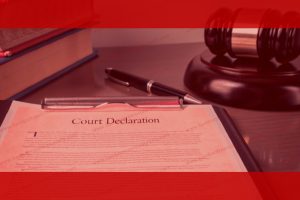What Constitutes Due Regard in Law
Due regard is defined in Canadian case law as the measure of attention or concern which a reasonably prudent person would give to a particular situation to avoid harm to others. It includes weighing the risk to others if the driver makes the trip, the risk of the potential injury to innocent bystanders and the safety of his or her own passengers. In circumstances where the driver is aware of a potentially hazardous condition, this includes determining whether it would be safer and more reasonable to delay the trip until the adverse conditions subside.
The extension of the statute of limitations period is intended to allow such drivers time to assess their circumstances and make an informed decision whether or not to travel. The Due Regard provision does not consist of deferring to the decision of the drivers , nor is it necessarily tied to their subjective state of mind. On the contrary, it requires seeking the answer to a question: What response to the perils presented by the weather would an objectively reasonable driver have made on the same occasion given information available to the defendant? The Due Regard provision does not require the Court to attribute motive to the driver or to assume the perspective of the driver. It requires the Court to assume the perspective of those affected by the defendant’s actions. Only in that sense is it objective.
Origins and Historical Context of Due Regard
Due regard was first used in United States v Bank of the Valley 1. It gave way to a line of cases which continued the trend, and by 1900, the term was firmly established in the Oklahoma case of McKenzie v Oklahoma. The court said "Due regard means the exercise of that degree of caution, care and foresight that would be exercised by a reasonably careful person."
The Supreme Court of Kansas, in American Can Co v Doran, cited Black’s Law Dictionary supra and stated: "Due regard means that degree of attentiveness which a very careful person would give to a similar situation."
The Canadian courts appear to have defined due regard differently, at least when handling an aircraft accident case. In the 1994 case O’Brien v Government of Canada, the court stated: "[W]here they speak of "due regard for all weather conditions" they refer, in my view, to the weather system in general, and do not intend to exclude other factors than the weather system, which can affect an aircraft’s safety in flight. Weight considerations, fuel consumption, height and speed are arguably significant matters which must also be taken into account. A collision could occur due to any of those factors. I would, then, read this requirement as meaning that the operator must exercise a degree of care which would be exercised by a very careful and prudent driver in like circumstances."
In Bank of the Valley the court specifically noted: The Bank was entitled to all the protection to which it was entitled alone; and the other party, to all the protection due regard for it would permit. "Due regard for the rights of others," is a phrase often used by the courts, as we have already seen. What is "an absence [or even a want] of such entire absence of caution" as, in the language of decisions, characterizes "the reckless or grossly negligent defendant," and falling far short of it, in the German phrase, is "due regard for the rights of others attendant upon the exercise of the right of way?" It is well understood, we think, that the exercise of a right of way gives to the holder the right to use it as the dangers of the situation will permit, and obliges him to use it so as not to justify resentment from abutting owners or other persons using or passing over it, or to endanger them.
In 1943, the Massachusetts Supreme Court in Hoyt v Federal Aviation Authority, said the word "regard" conveys vagueness when used alone and in isolation about a legal standard. ("Such a word is due to the judicial habit of using terms dictionary or treatise words of artificial order which do not have their ordinary English meaning"). Because of this "due regard" was used instead of "regard". The court said the "expression ‘due regard’ draws on the common understanding of society and of the reasonable man".
In the 1961 Supreme Court of California case of People v Harrison, the court differentiated between "due care" and "due regard". It explained that the "concept of due regard takes into account the safety of the aircraft involved as well as the aircraft in question." In addition, it has been said that "due care concerns the safety of persons aboard the aircraft using the right of way, whereas due regard also concerns the safety of persons on the ground and in other aircraft."
By 1973, the Western Australian case of Rice v Hogan, the term "due regards" was then defined as "that care which a prudent pilot would exercise under similar circumstances."
As seen in the above-mentioned examples, there is a multitude of definitions for the term due regard that have changed over time and still continues to change. It is important to note that there is no specific definition found under the legislation or regulations as to what is considered due regard.
Due Regard in Various Legal Systems
Due regard as a legal concept is applicable in a wide range of legal contexts. It appears in international law, human rights law, and environmental law – to name but a few. It has been applied and considered variously in order to, for example, facilitate the protection of human rights, the application of international law principles and the governance and regulation of the natural environment.
When applied in different contexts, as is its nature, its scope and degree of application differs according to the context. In the human rights context, for example, due regard has been read into certain human rights instruments as a requirement that States must consult and accommodate minority rights over and above the general right-not-to-be-discriminated against. Moreover, due regard in the human rights context can be used to mean the right to be consulted, but not necessarily to participate.
The degree of the duty to have due regard to certain rights obligations also varies between States. States do not have the same affirmative duties under the article 27 treaty bodies of the ICCPR, the CRC, and the Convention against Torture and Other Cruel, Inhuman or Degrading Treatment or Punishment ("CAT"), although in each case the State must have due regard to the respective articles and associated comments and recommendations.
Case Examples Illustrating Due Regard
To understand how due regard is applied in offsetting, consider the following examples:
- CEBA v. R. – In this case, the Court of Appeal determined that prior court decisions on the meaning of reasonable notice should be given due regard because it was accepted as good law at the time of the plaintiff’s dismissal. The plaintiff argued the law changed after his dismissal when the Supreme Court of Canada decided Wallace v. United Grain Growers Ltd., 1997 CanLII 319 (SCC), 3 S.C.R. 701 (S.C.C.) and adopted the changed law. However, the Court of Appeal concluded it would be unfair to give the plaintiff the benefit of the new law, because had he been aware of the change in law, he might have chosen to not sue and waited for a later court decision to provide him more termination pay or he could have taken advantage of a broader release granted where the defendant closed its business. Therefore, the plaintiff did not get the benefit of the new law.
- Tymoshek v. McCoy – In this case , the Court of Appeal refused to apply Wallace and take "due regard" of the unfairness that the conduct in breach created for the plaintiff since the breach of duty was unrelated to the only other factor that made Wallace apply: the length of the notice period. The Court of Appeal concluded that the facts attracted the need to take "due regard" of conduct in breach, but in this instance that conduct actually did not raise a need for Wallace to apply. The Court also set aside the trial judge’s portion of $20,000 for moral damages, but did order costs of $10,000 in favour of the plaintiff.
- Lentz v. Lentz – In this case, the Court of Appeal upheld a damages award against a plaintiff who excluded herself from the family farm for more than a decade, and until her father died. During that time, she brought three lawsuits, and wasted the court’s time and resources. The Court of Appeal considered it appropriate to take "due regard" of the plaintiff’s conduct, which included seeking to vacate the trial date twice, failing to respond to correspondence, disobeying court orders, and being contemptuous toward the opposing party, counsel and the court. As a result, the Court of Appeal ordered the plaintiff to pay $75,000 in costs against the defendant.
Implications and Criticism of Due Regard
The principle of due regard has had a significant impact on various legal processes. Some legal scholars believe that it is critical in determining how doctrine is to be interpreted in courts of law or tribunals. Others have stated that a clearly defined standard of due regard is essential in determining the way in which decision-makers are to interpret issues.
A distinction has even been made between the terms "duty" versus "regard," the latter of which is said to be greater than the former. Due regard, in this case, has been understood as being a powerful weapon in backhanding authority when offside and thus changing the actions of that authority.
Another school of thought states that due regard has just enough force to force a second guess of an authority while leaving more than enough left over to prevent the courts from reversing even the most clearly illegitimate decision. There are those however who would state that the due regard standard, while lax in some cases, is a high one as it is "unqualified deference to the process of change."
There are legal scholars and practitioners who feel that although it claims good intentions, due regard has been criticized as being oppositional to neutrality and just as liberal as other approaches, as it contains "the implicit acceptance of a certain amount of interference." It is suggested that the real effect of the application of due regard is to "turn decision-making almost entirely into an exercise in determinacy or agenda-setting."
Due regard has been described as having a great deal of uncertainty, in that there are sets of conflict of interest when it comes to interpreting the concept. It has also been stated that the difficulty of its interpretation highlights issues of minority rights, and that it requires either too great a deference or too much independence, depending on the issue at hand.
Some of the detractors of the concept of due regard have called for its redefinition or even scrapping entirely. Those in favor of due regard have argued for its usefulness as a tool of parliament, while its critics have argued that it deserves to be discarded as more trouble than it’s worth.
Comparison to Related Legal Terms
While "due regard" is a useful and relatively common legal term, it is not the only one of its kind. For this reason, learning about due regard can be made easier through comparing it to certain other similar terms and concepts. With that in mind, two other terms you might have heard of are due diligence and reasonable care. Due diligence is often the standard by which contractual obligations are measured. If appropriate due diligence has not been performed, the party that has failed to exercise it is then often found to be in breach of contract. The reasonable care standard is often used to determine whether a party has been negligent. When a party is alleged to have not acted up to a reasonable care standard, whether or not they have not done so is often determinative of the outcome of the case .
There are definitely some overlaps between due regard and these other terms or concepts, but there are critical distinctions and differences that must be acknowledged as well. Like due regard, both of these concepts set standards for care that must be met by an obligated party. Due diligence arises in a contractual context and often is the way in which contractual breaches are addressed. Reasonable care, on the other hand, generally is relevant in tort contexts, particularly negligence. Due regard, while not entirely distinct from these two standards, is somewhat unique. It may arise in some contractual contexts, but it is not a standard which tends to crop up all that often in torts contexts. While it is possible that due regard might apply in a tort situation, most commonly it is a concept that is used when interpreting statutes, regulations or other formal governmental documents.




+ There are no comments
Add yours